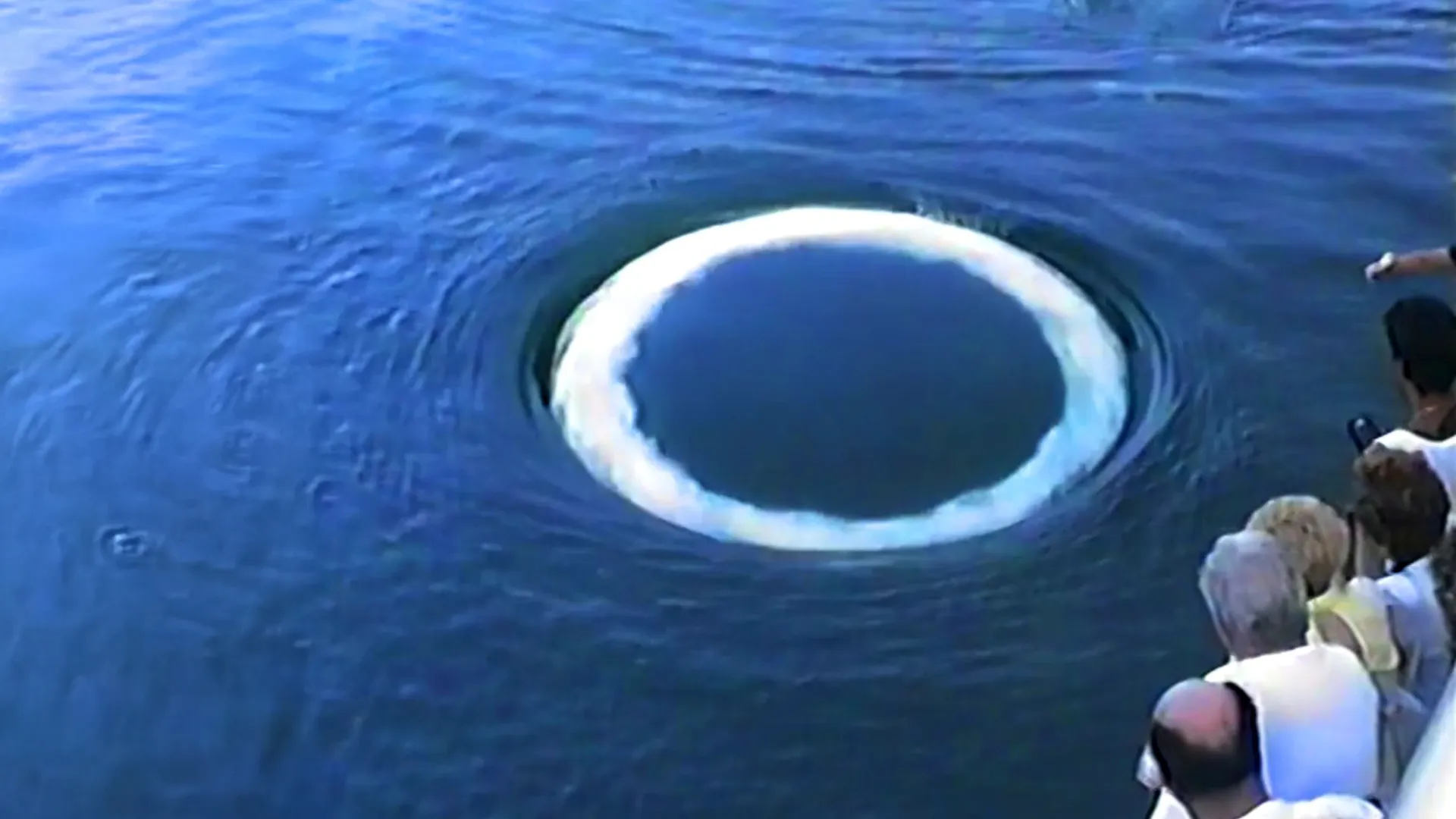Whales blow bubble rings--And they might be talking to us
Newly documented behavior in a recently published paper by SETI Institute and UC Davis team members may offer insights into nonhuman intelligence--and help shape the search for life beyond Earth
- Date:
- June 7, 2025
- Source:
- SETI Institute
- Summary:
- Humpback whales have been observed blowing bubble rings during friendly interactions with humans a behavior never before documented. This surprising display may be more than play; it could represent a sophisticated form of non-verbal communication. Scientists from the SETI Institute and UC Davis believe these interactions offer valuable insights into non-human intelligence, potentially helping refine our methods for detecting extraterrestrial life. Their findings underscore the intelligence, curiosity, and social complexity of whales, making them ideal analogues for developing communication models beyond Earth.
- Share:

A team of scientists from the SETI Institute and the University of California at Davis documented, for the first time, humpback whales producing large bubble rings, like a human smoker blowing smoke rings, during friendly interactions with humans. This previously little studied behavior may represent play or communication. Humpback whales are already known for using bubbles to corral prey and creating bubble trails and bursts when competing to escort a female whale. These new observations show humpback whales producing bubble rings during friendly encounters with humans. This finding contributes to the WhaleSETI team's broader goal of studying non-human intelligence to aid in the search for extraterrestrial intelligence.
"Because of current limitations on technology, an important assumption of the search for extraterrestrial intelligence is that extraterrestrial intelligence and life will be interested in making contact and so target human receivers," said Dr. Laurance Doyle, SETI Institute scientist and co-author on the paper. "This important assumption is certainly supported by the independent evolution of curious behavior in humpback whales."
"Humpback whales live in complex societies, are acoustically diverse, use bubble tools and assist other species being harassed by predators," said co-lead author Dr. Fred Sharpe, UC Davis Affiliate. "Now, akin to a candidate signal, we show they are blowing bubble rings in our direction in an apparent attempt to playfully interact, observe our response, and/or engage in some form of communication."
"Humpback whales often exhibit inquisitive, friendly behavior towards boats and human swimmers," said co-lead author Jodi Frediani, marine wildlife photographer and U.C. Davis Affiliate. "We've now located a dozen whales from populations around the world, the majority of which have voluntarily approached boats and swimmers blowing bubble rings during these episodes of curious behavior."
The team's findings were recently published in Marine Mammal Science in a paper titled "Humpback Whales Blow Poloidal Vortex Bubble Rings." The study analyzes 12 bubble ring-production episodes involving 39 rings made by 11 individual whales.
Similar to studying Antarctica or other terrestrial analogs as a proxy for Mars, the Whale-SETI team is studying intelligent, non-terrestrial (aquatic), nonhuman communication systems to develop filters that aid in parsing cosmic signals for signs of extraterrestrial life. As noted by Karen Pryor, "patterns of bubble production in cetaceans constitute a mode of communication not available to terrestrial mammals" (Pryor 1990).
Other team members and coauthors of the paper are Dr. Josephine Hubbard (Postdoc, U.C. Davis), Doug Perrine (Doug Perrine Photography), Simon Hilbourne (Marine Research Facility, Jeddah, Saudi Arabia), Dr. Joy Reidenberg (Icahn School of Medicine at Mount Sinai, NY) and Dr. Brenda McCowan, ( U.C. Davis, Veterinary Medicine), with specialties in animal intelligences, photography and behavior of humpback whales, whale anatomy, and the use of AI in parsing animal communication, respectively. An earlier paper by the team was published in the journal, PeerJ, entitled, "Interactive Bioacoustic Playback as a Tool for Detecting and Exploring Nonhuman Intelligence: "Conversing" with an Alaskan Humpback Whale." The authors would like to acknowledge the Templeton Foundation Diverse Intelligences Program for financial support of this work.
Story Source:
Materials provided by SETI Institute. Note: Content may be edited for style and length.
Journal Reference:
- Fred Sharpe, Jodi Frediani, Josephine Hubbard, Doug Perrine, Simon Hilbourne, Joy S. Reidenberg, Laurance R. Doyle, Brenda McCowan. Humpback Whales Blow Poloidal Vortex Bubble Rings. Marine Mammal Science, 2025; DOI: 10.1111/mms.70026
Cite This Page: